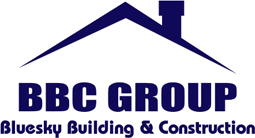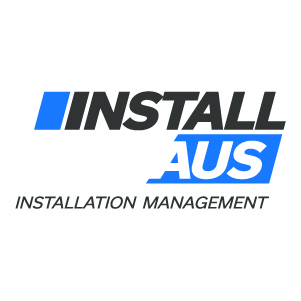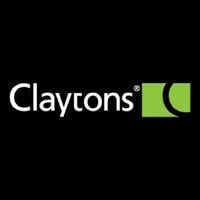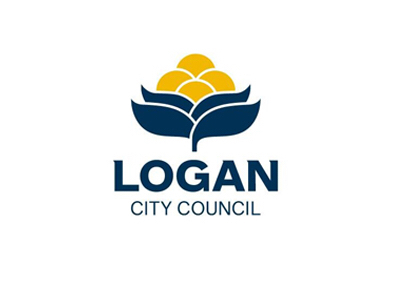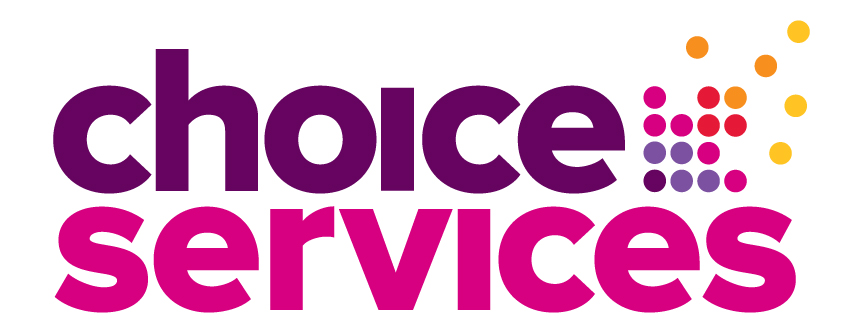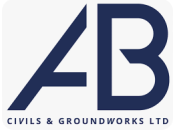Information
-
Conducted on
-
Person Conducting Induction
-
Company or Trading Name
-
Name:
-
Residential or Work Address
-
Email Address
-
Contact phone number
-
Construction Induction Card Number (Red Card, White Card, Blue Card etc..)
-
Photo Identifiaction
-
Please note their must be at least one English speaking person on site as part of the team to assist with communication as required.
-
All workers should review the Construction Management Plan (CMP) which outlines all safety measures and site specific instructions. A copy will be available to view from the Site Supervisor.
All workers must comply with the CMP and any direction given by the Site Supervisor or Safety Manager relating to site safety.
Non-compliance will mean immediate ejection from site. BBC have zero tolerance for unsafe work practices.
All personnel must sit this induction before entering any BBC site -
You must acknowledge and agree to comply with each section of the induction by selecting the check box beside each question.
Any boxes left unchecked will exclude you from working on any site where the Bluesky Building & Construction has management control. -
1. GENERAL
Use safety and other protective equipment when and wherever required. Every contractor must provide the applicable Personal Protective Equipment (PPE) for works under their management control; they owe it to themselves, their family and their employer to take care for their PPE. Where any of the equipment incurs a fault or requires replacement, it should be reported to your supervisor and must be replaced immediately. Safety equipment including gloves, safety goggles, helmets and earmuffs are for your protection. -
2. SAFETY FOOTWEAR
The wearing of footwear suitable for the individual project task is to be worn at all times. Thongs, sandals or bare feet are not permitted on any Bluesky Building & Construction -
3. ELECTRICAL LEADS
All electrical leads must be industrial/trade standard on site and must be suspended 2100 mm above floor level. All tools and leads must be tagged and tested every 3 calendar months, in accordance with the Industrial Standard for Electrical Installations on Construction Sites, March 2002. Logbooks of tested equipment are to be maintained by individual sub-contractors. Earth leakage protection will be provided at distribution switchboards, or via portable units. Piggyback plugs are not to be used. -
4. SCAFFOLD
All scaffolding must be erected and maintained in accordance with Australian Standards and Victorian Work Cover Authority requirements. Never remove guardrails, planks, handrails, ties or ladders for any reason. If scaffolding needs to be altered advise the supervisor. If you REMOVE ALTER OR TAMPER with the perimeter scaffold you will be back charged to have a licensed scaffold inspect & rectify the scaffold. Any mobile scaffolds brought onto the site must be accompanied by an information sheet detailing the manufacturer’s safe erection methods. Before using mobile scaffolds, ensure that all wheels are locked. -
5. EXPLOSIVE TOOLS
Only trained and qualified personnel are to use explosive powered tools. -
6. OPENINGS
Floor openings and excavations should be adequately guarded or barricaded or otherwise protected to prevent someone falling. No person may remove a safety barrier without approval. -
7. ROOF WORK & WORK AT HEIGHT
The Victorian Work Cover Authority Code of Practice Prevention of Falls in Housing Construction must be complied with for all work on BBC sites and will be used as a guide for controlling general fall from height risks. -
8. EXCAVATION
All trenching works are to be carried out in accordance with the Code of Practice Safety Precautions in Trenching Operations. No open trenches will be left unbarricaded. -
10. SITE CLEANLINESS & HOUSEKEEPING
A clean site is a safe and efficient site. You must ensure that all food & material waste generated by you & your work is cleaned up progressively (minimum requirement is daily) and place in the rubbish skips or cage provide by BBC. Failure to comply will result in you being back charge to clean up YOUR MESS Always use sanitary facilities and keep them clean and tidy. Keep lunchrooms clean and tidy. -
11. RUBBISH
Rubbish bins and cages are provided for your use. USE THEM. -
12. SIGNAGE
Safety signage is for the information of all on site. Do not cover or impair view of signage. -
13. ALCOHOL & DRUGS
Alcohol and illicit drugs must not be brought onto or consumed on site. If you are affected by alcohol or drugs you will not permitted to enter any BBC site, doing so you will face possible termination of your contract. -
15. GENERAL PROHIBITIONS
The following offences will not be tolerated on this site:
•Not using the sanitary facilities
•Fighting
•Intoxication
•Use of bump fire mode on nail guns
(unless flooring - other persons must be clear of firing zone).
•Bullying
•Refusal to act on safety instructions issued by the supervisor or safety manager
•Removal of guard rails or barricades without approval or alternative protection
•Vandalism or stealing of any kind
•Dogs & Children on site
•No practical jokes or horseplay
•Domestic ladders are not permitted on site -
16. UNSAFE EQUIPMENT & WORK PRACTICES
Report immediately any unsafe equipment, material or work practices to the Supervisor. Pay attention to and heed all safety warning signs. They are there for your protection. -
17. PLANT & EQUIPMENT
All plant and equipment used must be serviced regularly. Maintenance records must be made available for inspection as required. Plant and equipment operators must be appropriately trained and competent in the operation and safe use of the plant or equipment they operate. Where required under the provisions of the OH&S Certification of Plant Users and Operators Regulations 1994, or other relevant regulations, plant and equipment operators must hold appropriate certification. -
18. WELDING & CUTTING
Unauthorised use of welding and cutting equipment is prohibited. Welding screens should be used wherever possible, particularly if other workers may be exposed to welding activities. All equipment must be in good working order and a FIRE EXTINGUISHER available for immediate use. Users must wear suitable protective clothing. -
19. DANGEROUS GOODS
No dangerous or toxic substances are to be brought on site unless:
•Accompanied by the relevant Material Safety Data Sheet (MSDS) -
20. MANUAL HANDLING
Painful and long lasting injury can be avoided by correct lifting techniques, such as:
•Use mechanical lifting devices whenever possible
•Ensure access to the work area is clear
•Always obtain help when lifting heavy items
•Avoid bending when lifting, bend your knees and keep your back straight
•Hold the load as close to your body as possible
•Plan the lift by knowing exactly where it is to be placed
•Take care to avoid slippery surfaces
•Physical fitness and warm up exercise and activities will assist in avoiding injury
•Ensure assistance is sought if required. -
22. Safe Work Method Statement
All contractors must complete a site-specific safe work method statement prior to commencement of work on site and review the SWMS as site or task conditions change. -
OUTDOOR WORK ACTIVITIES
Ultra violet radiation (UV) is an occupational health and safety issue. Workplace UV exposure is a major hazard for outdoor workers. Personal protective equipment is to be used:
•Broad brimmed hat (at least 8cm)
•Long sleeve close weave shirt (AS A399: 1996)
•SPF15+ (or higher) sunscreen
•Sunglasses (AS1067) -
INCIDENT & CLOSE CALL REPORTING
All incidents and close calls must be reported to the supervisor or construction manager every contractor and their employees are required to:
•Adhere to the Company’s safe working practices, instructions and rules
•Perform all duties in a manner that is without risk to themselves or to others
•Report to management any plant, equipment or work procedure which is considered to be unsafe
•Where an incident results in medical attention the incident scene must be preserved unless authorised by a Bluesky Building & Construction representative or the competent authority.
•Co-operate with management to ensure health and safety responsibilities are fulfilled and maintained. -
EMERGENCY ACTION
•Don’t panic
•Send for a qualified First Aid Officer
•Do not move the injured person unless their life is threatened
•Ensure airway is clear
•Stop serious bleeding by applying pressure to the affected area
•Make the injured person comfortable
•Do not interfere with the accident scene
DIAL 000 FOR HELP IN AN EMERGENCY
When you make an emergency call say
WHERE the emergency is
WHAT has happened
WHAT is being done
WHO is calling
WAIT to be told what to do before hanging up -
Bluesky Building & Construction will, as far as is practicable, provide a safe and healthy workplace for its employees, contractors and visitors to any of its worksites. This induction and its contents are a guide to assist in providing information to help in achieving a safe and healthy working environment in the workplace. This induction does not remove the obligation of individual contractors and their employees from observance of the Occupational Health and Safety Act and relevant Regulations.
The information in this induction applies to all persons on any Bluesky Building & Construction
Bluesky Building & Construction recognises the value of involving employees and contractors in the formulation and implementation of the health and safety programs and safe work procedures. -
Please sign to acknowledge you are the person who has completed this induction and agree to abide by Bluesky Building & Construction Safe Work Practices.
